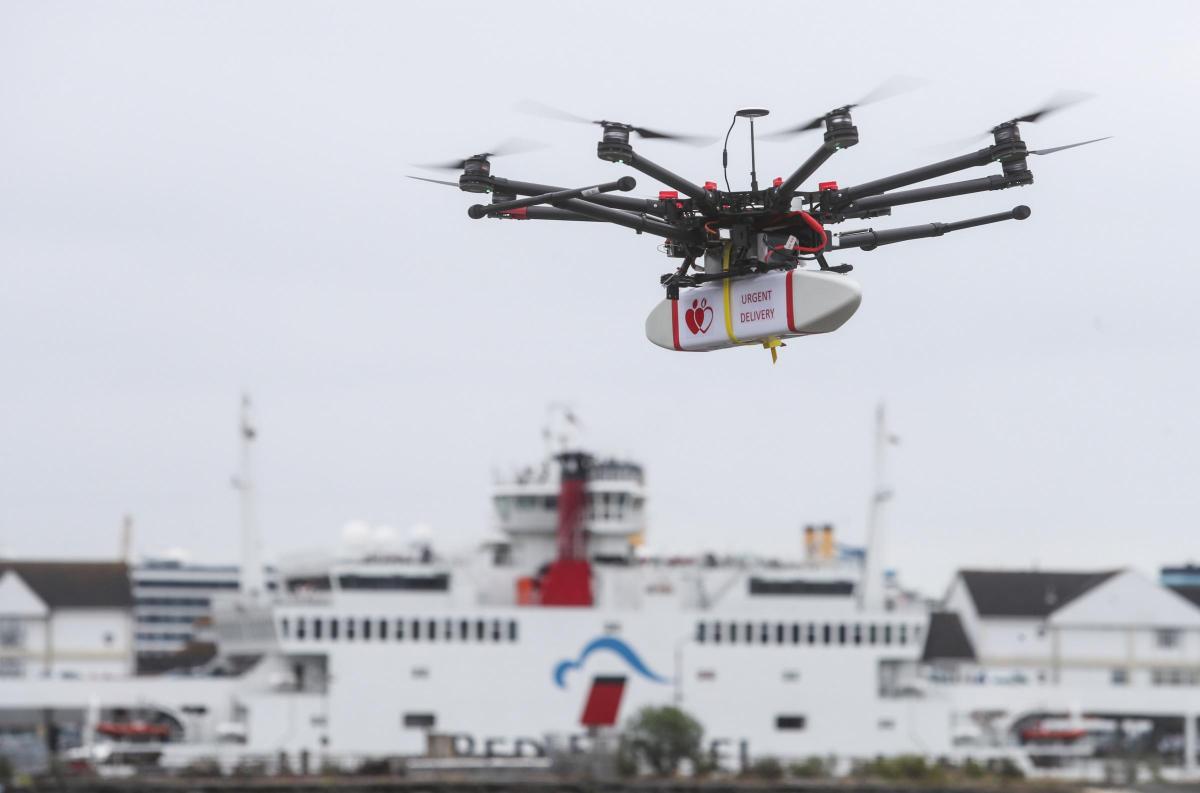
The UK Government recently announced that drones would be used to carry medical supplies from Hampshire to the Isle of Wight, and is funding drone tests and a new air traffic control system (please read recent Urban Air Mobility News article). This initiative has been embraced by the UK drone industry.
According to newelecronics.co.uk, Robert Garbett, Founder of Drone Major Group and Chairman of the Drone Delivery Group has welcomed the move by the Department for Transport and has suggested that it will help to open the way to accelerated growth of the UK drone industry. “It will provide the opportunity for UK plc to become a world leader in this fast growth technology,” he said.
Garbett has warned that for drones to succeed the public must gain a better understanding of what is possible with this technology and how it can be applied most effectively. “In most people’s vision of drone delivery, there is an image of thousands of small air drones with parcels hanging from them being delivered to virtually every home in the Kingdom… but this would be the least practical and least achievable application for air drones yet conceived. Equally, although it may disappoint many people, the opportunity to see all our online orders delivered to our homes by drone any time soon is very slim indeed.”
If such a scenario was to be delivered, Garbett makes the point that significant investments in safety, security and expensive infrastructure would be necessary. He does suggest, however, that the future of air drones is far more exciting, and far closer than anyone thinks but that… ”It does not look as the public or the media currently imagine it.” According to Garbett the evolution of delivery by air drone is more likely to look like this:
Mid-mile delivery – the bulk transportation of cargo from storage hub to storage hub, or from airport to storage hub for onward delivery to increase capacity into remote and hard to reach areas or during emergencies, (such as the delivery of medicines and supplies during the current pandemic) or where access is temporarily restricted.
Limited last-mile delivery – the delivery of items between locations where rapid delivery will save or significantly improve quality of life, such as medical supplies, medicines, organs and blood between or to hospitals.
Industrial delivery applications – the movement of cargo and assets around industrial and transportation locations such as refineries, airports, or large logistics locations and smaller internal delivery operations for the delivery of mail, spares or tooling.
Blue light support – the movement of supplies and equipment in support of blue light operations such as accident and traffic management, crime scene management and terrorist or public safety incident handling.
Beyond this Garbett argues that undoubtedly there will be other limited scenarios that will be possible, such as supplies to remote locations, or the delivery of emergency spares and tools to address leaking gas mains or ruptured water mains, as an example.
He makes the point that in order for any of this to become a reality all stakeholders in the drone industry will have to recognise the need for drone testing areas for applications to be developed safely and effectively.
For more information


